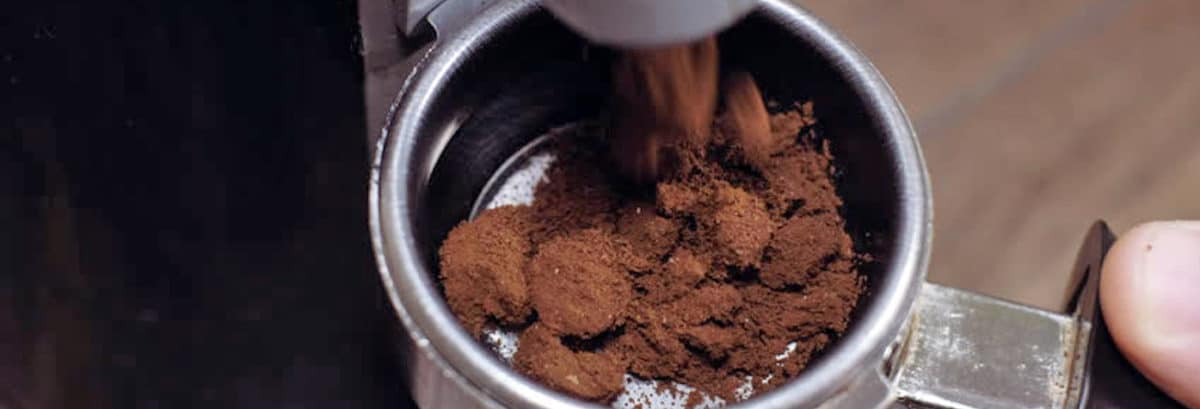
Coffee Grinding + Particle Size
One of the first steps many coffee enthusiasts take when looking to improve their home-brewed coffee is to start buying whole beans and grinding them at home themselves. While this is certainly the best way to achieve the freshest and most flavorful product at home, it does mean there are some new factors to consider. Since coffee particle size and consistency are paramount to brewing a good cup of coffee, a grinder can either help or inhibit this quest.
Getting the the right grind for your coffee comes down to two things – particle size, and uniformity. We’ll start by taking a look at particle size.
When you’re buying pre-ground coffee you’ll probably see on the bag descriptions ranging from coarse to fine/espresso ground and a host of others in between. When you’re grinding beans at home you’re suddenly going to have a lot more options and control over this process so it’s important to know what you’re getting yourself into.
Different brewing methods require different grind sizes. Coarsely ground coffee means larger particles and a lower surface area to volume ratio and will consequently extract more slowly. For this reason, longer brewing methods like drip coffee and French press will require a more coarse grind to get the desired flavor. Shorter, more intense, brewing methods such as those used for making espresso or Turkish coffee require a finer grind. These smaller particles have far greater surface area to volume ratio making them able to produce a flavorful cup within the shorter brew times of these methods.

Any grinder you get should have a variety of sizes it can grind to and you can experiment at home yourself to figure out exactly what size works best for your brewing method and palate. The most important quality to look for in a grinder is consistency. And while any grinder you get will produce grounds of varying sizes, only higher quality ones will have a smaller range of variance with more of the final product being your desired size. This is crucial for when you actually go to brew the grinds into coffee. A consistent particle size will ensure even flavor extraction and increase your ability to get predictable results time after time, but it does come at a bit of a premium. Grinders come in two categories – burr grinders and blade grinders. The more popular, and less expensive of the two, are blade grinders. Blade grinders have a single blade at the bottom of the hopper, slicing beans as they come into contact with it. While not all blade grinders are alike, it is important to note some distinct disadvantages that accompany their use. Since the beans being sliced essentially comes down to the random chance of them hitting the blade while flying around the container, the resulting grind will have a larger amount of variance. With a blade grinder, the size of the coffee particles is only controlled by how long you grind the beans for, a longer grind duration making for a more finely ground result. This longer grind time invites one of the main downsides to blade grinders – excessive heat.
Because the blade has to spin at such high speeds to slice the beans, the longer one of these grinders is in operation, the hotter it becomes. Consequently when you go to produce a finer particle size you may risk burning your beans. Burnt beans can mean a more bitter tasting cup of coffee in the end. However, there are a few hacks to help you get the most out of your blade grinder if that’s the method you end up choosing. Grinding in shorter bursts can help reduce the heat resulting from friction and subsequent risk of burnt beans. Still, some suggest that if your budget is limited to blade grinders you may be better served by saving your money all together and buying pre-ground coffee or grinding whole beans at your local shop.
For those looking to get a better quality grinder and product, burr mills are the way to go. Burr grinders work to grind coffee by breaking up beans with the pressure of two wheels on either side pressing together. This process is slower, but more precise since every bean has to pass between the wheels there is less of an element of random chance involved. As a result, the grinds coming from a burr mill will more closely resemble what you desire and with far less variability. A uniform and consistent grind is the only way to ensure that your coffee is brewing evenly and that over and under-extraction is minimized. Ultimately this enhanced uniformity means you can more reliably get the flavor you’re looking for with the brewing method of your choosing.
For freshness and depth of flavor nothing beats grinding your beans yourself right before use. Taking a little time to make sure you get the right grinder for your budget and coffee preferences and that you’re using it to grind your beans to the appropriate size is the most sure-fire way to take your home-coffee experience to the next level.
